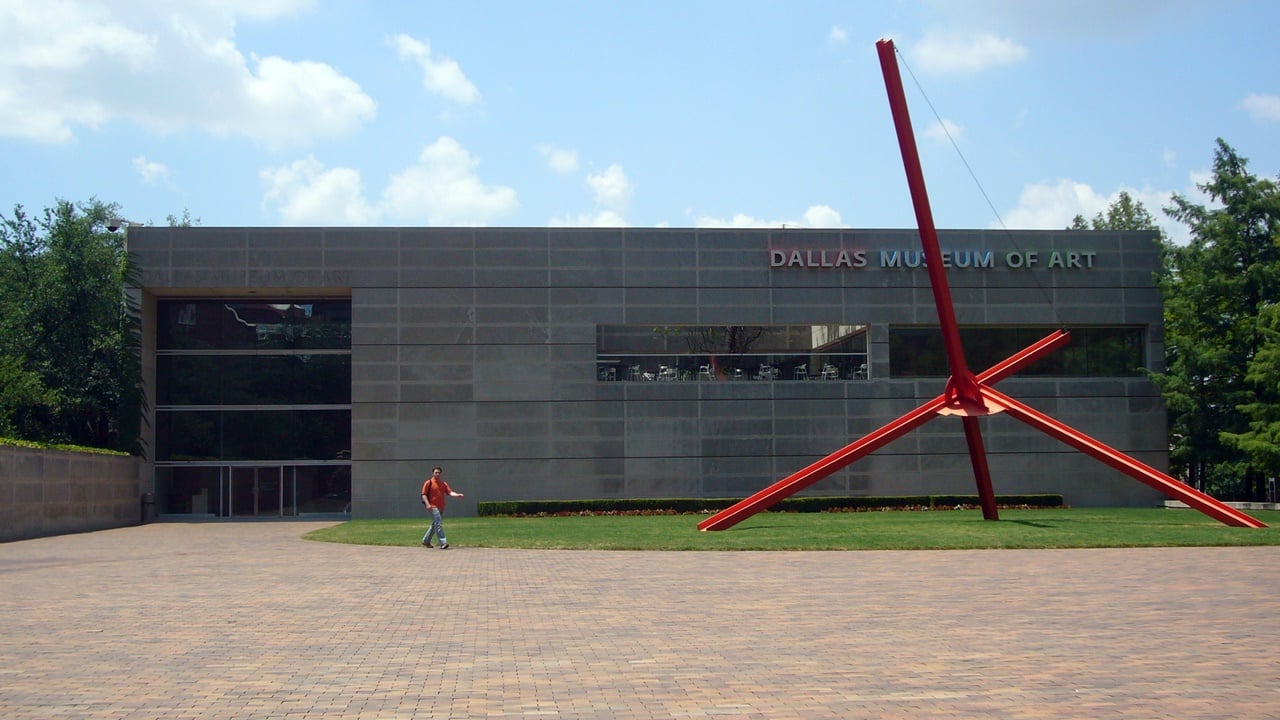
The Dallas Museum of Art laid off 20 workers, or about eight percent of its workforce, last month ahead of a major planned renovation budgeted at $150 to $175 million.
The DMA had announced the layoffs in a press release sent by email, in which the museum also revealed it had made two full-time jobs part time and announced new hours beginning in December that would see it close on Tuesdays.
The museum said the “difficult decision” was made in response to the COVID-19 pandemic, which led to declines in attendance numbers. However, the layoffs have sparked questions about the company’s financial situation and leadership.
“It’s hard to trust anything that leadership says right now,” one staff member who wished to remain anonymous told Hyperallergic. “It feels like the people behind the jobs just don’t matter as much as the numbers.”
According to the DMA’s most recent financial reports, its total assets grew from about $266 million in 2019 to about $276 million in June 2022. But the museum has reported drops in its investments held for endowment (a specific category of financial assets that museums maintain as part of their endowment fund) and net assets without donor restrictions (funds and property that can be used by the museum’s board of directors at its discretion).
Of the latter, the DMA in its 2022 financial statement noted a change of about $9.4 million caused by operations expenses—a possible warning sign for executives.
“We did not have a deficit for the fiscal year that ended June 30, 2023. However, in order to avoid future deficits and to create financial conditions that will be sustainable over the long term, we have made the difficult decisions necessary to realign our budget,” a spokesperson for the DMA said in an email responding to questions from Artnet News.
“The DMA was committed to keeping all staff throughout the most challenging times of the pandemic, and used government funds and significant private philanthropic support in order to do so. While the DMA has worked diligently to sustain this level of retention, with that funding gone, along with other financial challenges facing the entire arts industry, the unfortunate reality is that we need to make some adjustments to how we operate.”
The museum saw massive drops in its attendance each year since 2019, when about 800,000 visitors attended the museum in person. That number dropped to about 635,000 in 2020 when the pandemic broke out and sat around 665,000 (including virtual attendance) in 2022. “Our attendance numbers are improving but have not yet returned to pre-pandemic levels,” the museum said in its email.
Meanwhile, the museum’s salaries and other compensation, including employee benefits, have averaged about $15.4 million to $15.9 million since 2019. In 2022, a little over $2 million of that went to the top executives of the museum including executive director Doroteo Agustin Arteaga and senior curator Sarah Schluening. Arteaga’s compensation rose from $597,597 reported in June 2020 to $641,014 in 2022.
“Our staff, including leadership, is compensated in line with industry standards,” the museum said by email, when asked if the DMA intended to cut the salaries of its executives to at least pre-pandemic levels in an effort to reduce its operating expenses.
The DMA’s expansion project, led by the Spanish architecture firm, Nieto Sobejano, is being funded through private donations that cannot be applied to operational costs, Hyperallergic reported. The museum is also seeking $36 million in city bonds for renovations.
“Our efforts to reimagine the DMA’s physical facilities is a project separate from our annual operating budget and will be funded largely through private philanthropy. As a city-owned facility, we are also in the process of working to address basic facility needs such as HVAC and Fire Control in the 2024 Bond Election,” the museum said by email.
“The expansion is a vital part of the DMA’s plans for a sustainable future. Our 40-year-old building has outdated systems and infrastructure in need of repair. But most importantly, we need facilities that can better attract and serve audiences of today and the future, as well as accommodate our growing collection.”
More Trending Stories:
Revealed: The Major Mystery Consignors of New York’s Multi-Billion-Dollar Fall Auction Season
Christie’s Pulled Two Works by a Prominent Middle Eastern Artist From Sale After a Complaint